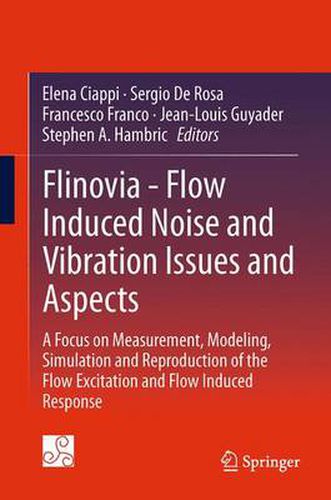Readings Newsletter
Become a Readings Member to make your shopping experience even easier.
Sign in or sign up for free!
You’re not far away from qualifying for FREE standard shipping within Australia
You’ve qualified for FREE standard shipping within Australia
The cart is loading…






This title is printed to order. This book may have been self-published. If so, we cannot guarantee the quality of the content. In the main most books will have gone through the editing process however some may not. We therefore suggest that you be aware of this before ordering this book. If in doubt check either the author or publisher’s details as we are unable to accept any returns unless they are faulty. Please contact us if you have any questions.
Flow induced vibration and noise (FIVN) remains a critical research topic. Even after over 50 years of intensive research, accurate and cost-effective FIVN simulation and measurement techniques remain elusive. This book gathers the latest research from some of the most prominent experts in the field.
It describes methods for characterizing wall pressure fluctuations, including subsonic and supersonic turbulent boundary layer flows over smooth and rough surfaces using computational methods like Large Eddy Simulation; for inferring wall pressure fluctuations using inverse techniques based on panel vibrations or holographic pressure sensor arrays; for calculating the resulting structural vibrations and radiated sound using traditional finite element methods, as well as advanced methods like Energy Finite Elements; for using scaling approaches to universally collapse flow-excited vibration and noise spectra; and for computing time histories of structural response, including alternating stresses.
This book presents the proceedings of the First International Workshop on Flow Induced Noise and Vibration (FLINOVIA), which was held in Rome, Italy, in November 2013. The authors’ backgrounds represent a mix of academia, government, and industry, and several papers include applications to important problems for underwater vehicles, aerospace structures and commercial transportation. The book offers a valuable reference guide for all those working in the area of flow-induced vibration and noise.
$9.00 standard shipping within Australia
FREE standard shipping within Australia for orders over $100.00
Express & International shipping calculated at checkout
This title is printed to order. This book may have been self-published. If so, we cannot guarantee the quality of the content. In the main most books will have gone through the editing process however some may not. We therefore suggest that you be aware of this before ordering this book. If in doubt check either the author or publisher’s details as we are unable to accept any returns unless they are faulty. Please contact us if you have any questions.
Flow induced vibration and noise (FIVN) remains a critical research topic. Even after over 50 years of intensive research, accurate and cost-effective FIVN simulation and measurement techniques remain elusive. This book gathers the latest research from some of the most prominent experts in the field.
It describes methods for characterizing wall pressure fluctuations, including subsonic and supersonic turbulent boundary layer flows over smooth and rough surfaces using computational methods like Large Eddy Simulation; for inferring wall pressure fluctuations using inverse techniques based on panel vibrations or holographic pressure sensor arrays; for calculating the resulting structural vibrations and radiated sound using traditional finite element methods, as well as advanced methods like Energy Finite Elements; for using scaling approaches to universally collapse flow-excited vibration and noise spectra; and for computing time histories of structural response, including alternating stresses.
This book presents the proceedings of the First International Workshop on Flow Induced Noise and Vibration (FLINOVIA), which was held in Rome, Italy, in November 2013. The authors’ backgrounds represent a mix of academia, government, and industry, and several papers include applications to important problems for underwater vehicles, aerospace structures and commercial transportation. The book offers a valuable reference guide for all those working in the area of flow-induced vibration and noise.